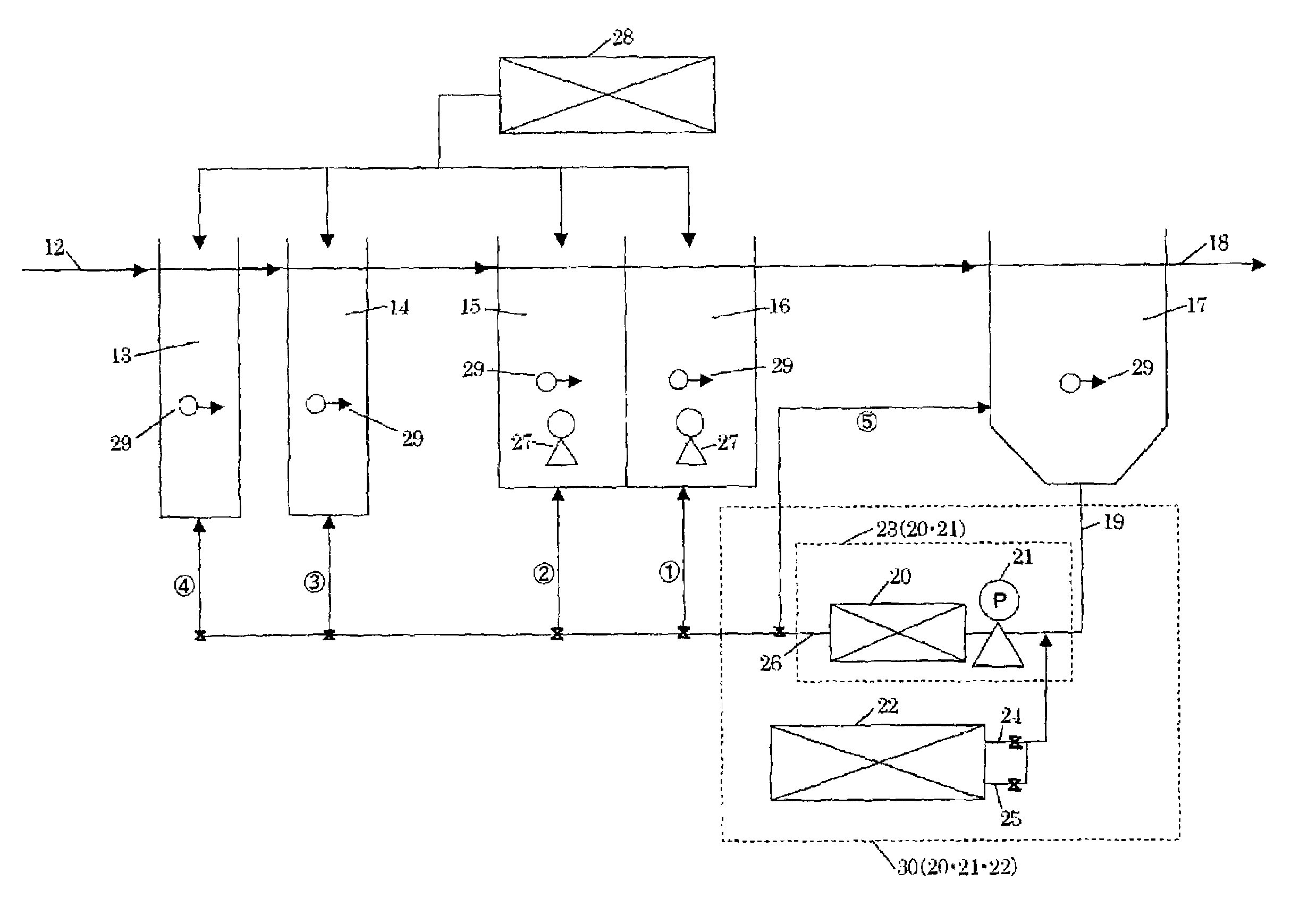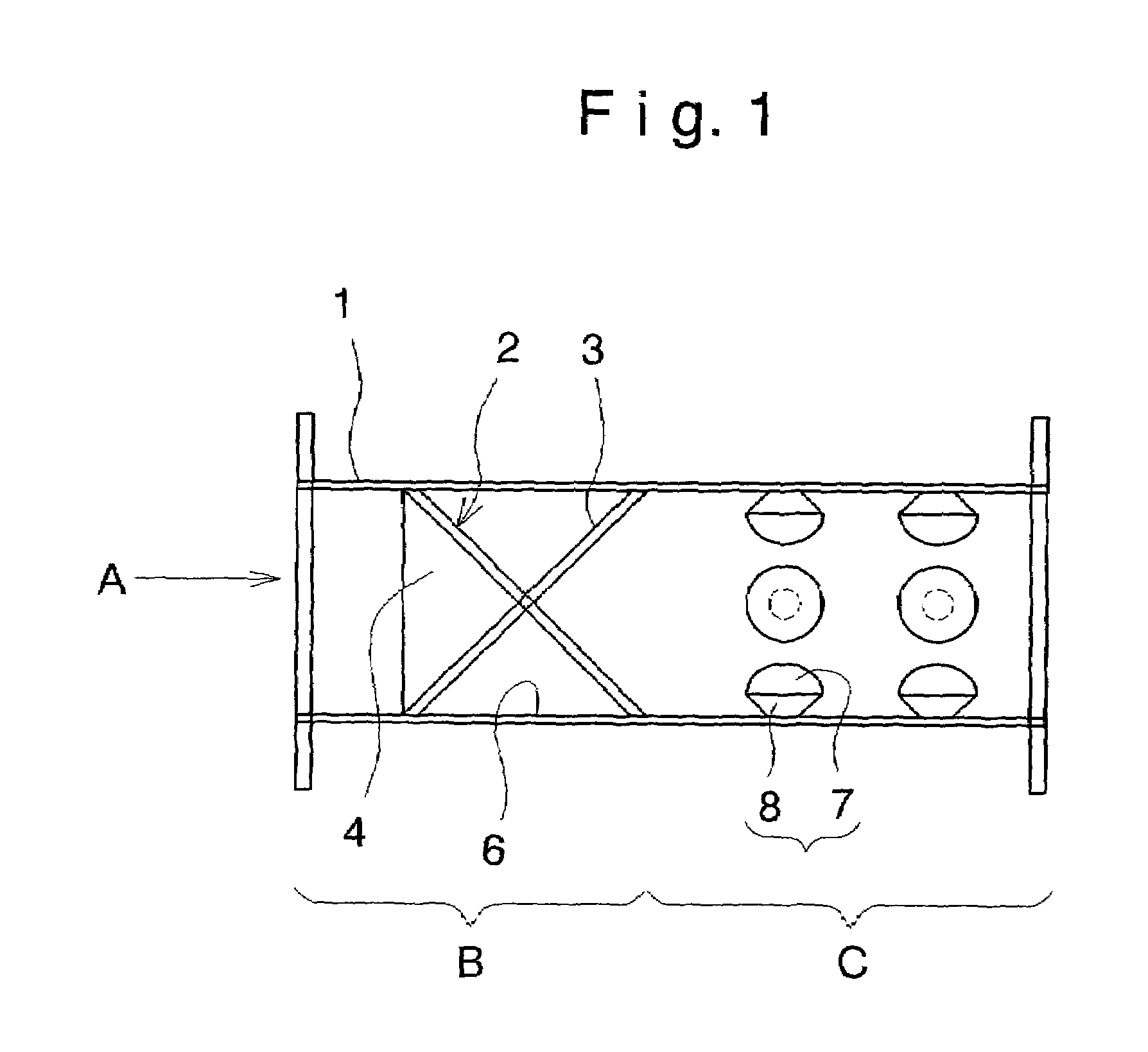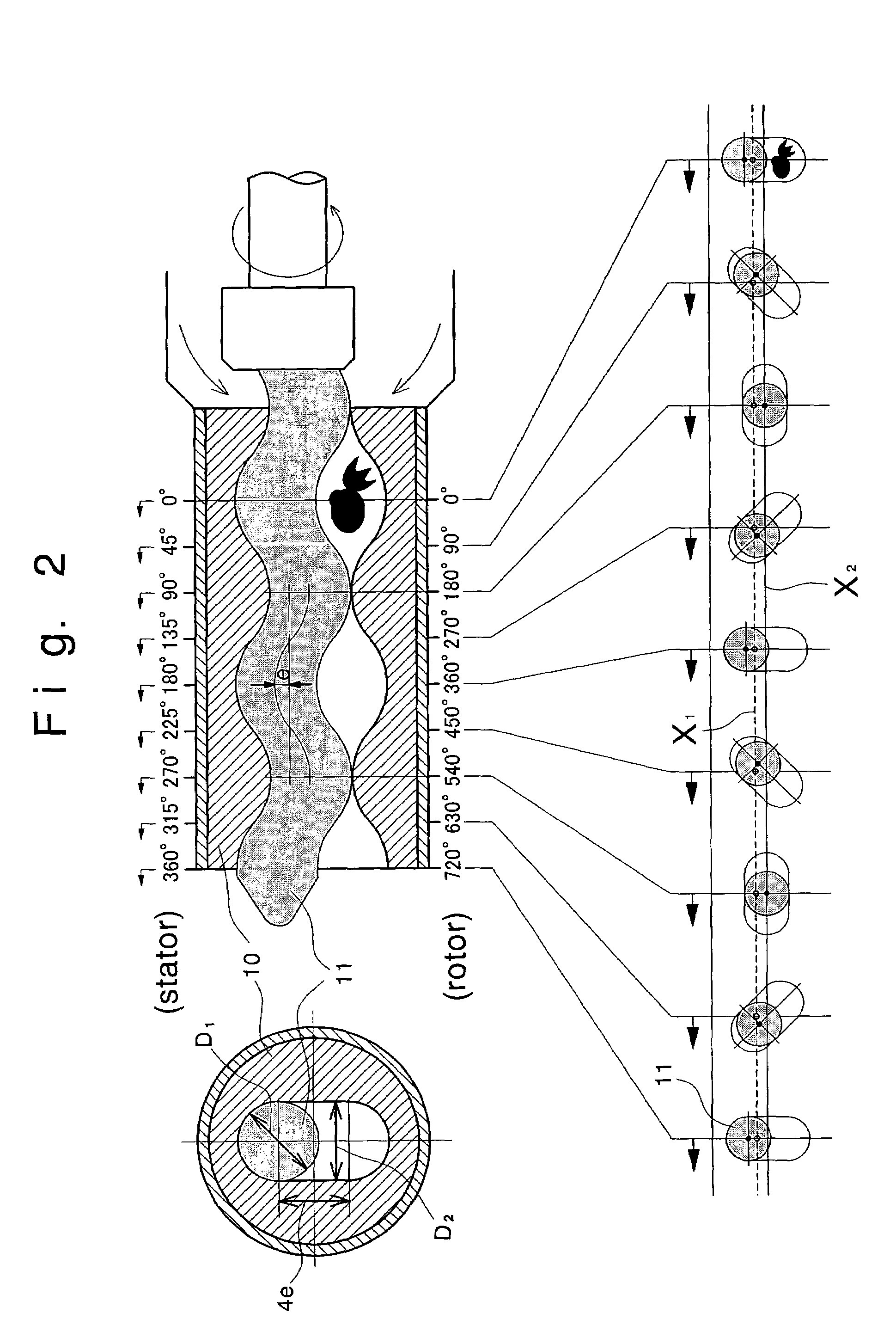Sewage treatment process by activated-sludge method comprising line atomizing treatment
a sewage treatment and activated sludge technology, applied in water/sewage treatment by oxidation, biological water/sewage treatment, sustainable biological treatment, etc., can solve the problems of unpracticed fundamental solutions, increased power consumption or the need for an excessive space for the reaction vessel, and low oxygen utilization efficiency
- Summary
- Abstract
- Description
- Claims
- Application Information
AI Technical Summary
Benefits of technology
Problems solved by technology
Method used
Image
Examples
Embodiment Construction
[0073]In the waste water treatment process according to the biosolid method, the present invention has accomplished to transfer under pressure of a gas-liquid with a high gas / liquid ratio of a desired liquid and a reactive gas of oxygen as a hardly dissolvable gas or oxygen and ozone into an atomizer having a function for rendering the gas-liquid into ultrafine bubbles or forming a mixture and having a function to generate cavitation and ultrasonic waves under a high pressure and by the aforementioned atomizer treatment, the reactive gas is caused to be dissolved in the aforementioned gas-liquid to give a gas-dispersion liquid, when the activated gas still remains, while the same is introduced into a reaction vessel where the biochemical reaction is promoted by sufficient aeration (supply of dissolved oxygen) or, alternatively, in the course of formation of the gas-dispersion liquid in the aforementioned line atomizer, the ozone-oxidation decomposition reaction is effected instantan...
PUM
| Property | Measurement | Unit |
|---|---|---|
| diameter | aaaaa | aaaaa |
| pressure | aaaaa | aaaaa |
| concentration | aaaaa | aaaaa |
Abstract
Description
Claims
Application Information
 Login to View More
Login to View More - R&D
- Intellectual Property
- Life Sciences
- Materials
- Tech Scout
- Unparalleled Data Quality
- Higher Quality Content
- 60% Fewer Hallucinations
Browse by: Latest US Patents, China's latest patents, Technical Efficacy Thesaurus, Application Domain, Technology Topic, Popular Technical Reports.
© 2025 PatSnap. All rights reserved.Legal|Privacy policy|Modern Slavery Act Transparency Statement|Sitemap|About US| Contact US: help@patsnap.com



